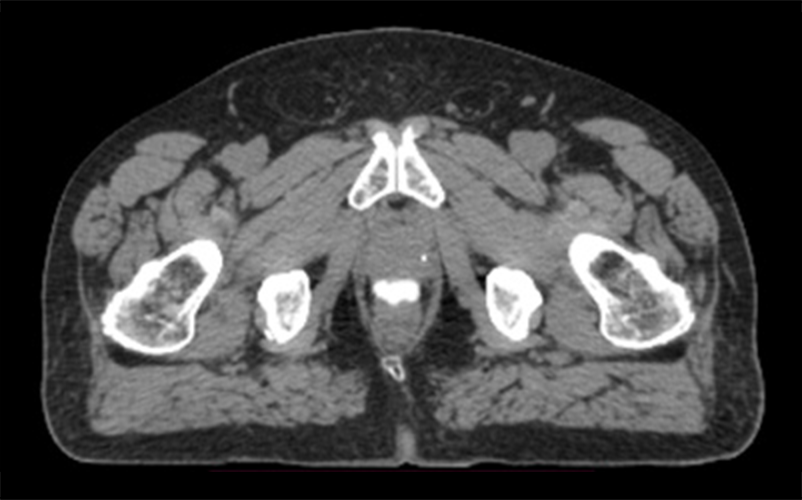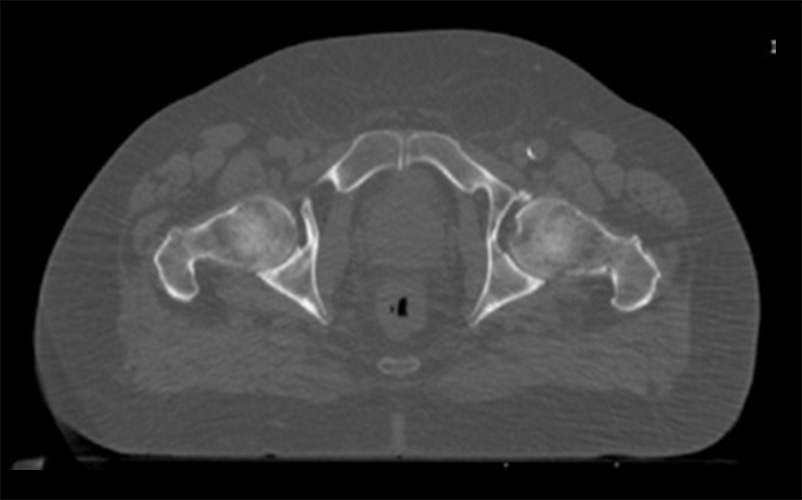Boston Scientific accounts are for healthcare professionals only.
Questions on product and procedure
Questions on reimbursement
*Referenced with permission from the NCCN Clinical Practice Guidelines in Oncology (NCCN Guidelines®) for Prostate Cancer, V.1.2023. © National Comprehensive Cancer Network, Inc. 2022. All rights reserved. Accessed September 16, 2022. To view the most recent and complete version of the guideline, go to NCCN.org. NCCN makes no warranties of any kind whatsoever regarding their content, use or application and disclaims any responsibility for their application or use in any way.
NCCN=National Comprehensive Cancer Network® (NCCN®)
References
- Hamstra DA, Mariados N, Sylvester J, et al. Continued benefit to rectal separation for prostate radiation therapy: final results of a phase III trial. Int J Radiat Oncol Biol Phys. 2017 Apr;97(5):976–85.
- Hamstra DA, Mariados N, Sylvester J, et al. Sexual quality of life following prostate intensity modulated radiation therapy (IMRT) with a rectal/prostate spacer: secondary analysis of a phase 3 trial. Pract Radiat Oncol. 2018 Jan-Feb;8(1):e7–e15.
- Mariados N, Sylvester J, Shah D, et al. Hydrogel spacer prospective multicenter randomized controlled pivotal trial: dosimetric and clinical effects of perirectal spacer application in men undergoing prostate image guided intensity modulated radiation therapy. Int J Radiat Oncol Biol Phys. 2015 Aug 1;92(5):971–7.
- Data on file with Boston Scientific.
- US Food and Drug Administration. 510(k) Summary for Barrigel® Injectable Gel. 2022. www.accessdata.fda.gov/cdrh_docs/pdf22/K220641.pdf. Accessed February 14, 2023.
- Barrigel® Injectable Gel Instructions for Use. 2022. barrigelsecure.s3.us-east-2.amazonaws.com/ifu/Barrigel-IFU-current.pdf. Accessed September 7, 2022.
- Mariados NF, Orio PF III, Schiffman Z, et al. Hyaluronic acid spacer for hypofractionated prostate radiation therapy: a randomized clinical trial. JAMA Oncol. 2023 Feb 9. Online ahead of print.
- Repka MC, Creswell M, Lischalk JW, et al. Rationale for utilization of hydrogel rectal spacers in dose escalated SBRT for the treatment of unfavorable risk prostate cancer. Front Oncol. 2022 Mar 31;12:860848.
Health economic and reimbursement information provided by Boston Scientific Corporation is gathered from third-party sources and is subject to change without notice as a result of complex and frequently changing laws, regulations, rules, and policies. This information is presented for illustrative purposes only and does not constitute reimbursement or legal advice. Boston Scientific encourages providers to submit accurate and appropriate claims for services. It is always the provider’s responsibility to determine medical necessity, the proper site for delivery of any services, and to submit appropriate codes, charges, and modifiers for services rendered. It is also always the provider’s responsibility to understand and comply with Medicare national coverage determinations (NCD), Medicare local coverage determinations (LCD), and any other coverage requirements established by relevant payers which can be updated frequently. Boston Scientific recommends that you consult with your payers, reimbursement specialists, and/or legal counsel regarding coding, coverage, and reimbursement matters. Boston Scientific does not promote the use of its products outside their FDA-approved label. Information included herein is current as of November 2022 but is subject to change without notice. Rates for services are effective January 1, 2023.
Payer policies will vary and should be verified prior to treatment for limitations on diagnosis, coding, or site of service requirements.
The coding options listed within this guide are commonly used codes and are not intended to be an all-inclusive list. We recommend consulting your relevant manuals for appropriate coding options.
CPT® Disclaimer
Current Procedural Terminology (CPT) Copyright 2022 American Medical Association. All rights reserved. CPT is a registered trademark of the American Medical Association.
Applicable FARS/DFARS Restrictions apply to government use. Fee schedules, relative value units, conversion factors, and/or related components are not assigned by the AMA, are not part of CPT, and the AMA is not recommending their use. The AMA does not directly or indirectly practice medicine or dispense medical services. The AMA assumes no liability for data contained or not contained herein.
All trademarks are the property of their respective owners.
CAUTION: The law restricts these devices to sale by or on the order of a physician. Indications, contraindications, warnings, and instructions for use can be found in the product labelling supplied with each device or at www.IFU-BSCI.com. Products shown for INFORMATION purposes only and may not be approved or for sale in certain countries. This material not intended for use in France.
SpaceOAR and SpaceOAR Vue Hydrogels are intended to temporarily position the anterior rectal wall away from the prostate during radiotherapy for prostate cancer and in creating this space it is the intent of SpaceOAR and SpaceOAR Vue Hydrogels to reduce the radiation dose delivered to the anterior rectum.
SpaceOAR and SpaceOAR Vue Hydrogels contain polyethylene glycol (PEG). SpaceOAR Vue Hydrogel contains iodine.
Prior to using these devices, please review the Instructions for Use for a complete listing of indications, contraindications, warnings, precautions and potential adverse events.
As with any medical treatment, there are some risks involved with the use of SpaceOAR and SpaceOAR Vue Hydrogels. Potential complications associated with SpaceOAR and SpaceOAR Vue Hydrogels include, but are not limited to: pain associated with SpaceOAR and SpaceOAR Vue Hydrogels injection, pain or discomfort associated with SpaceOAR and SpaceOAR Vue Hydrogels, local inflammatory reactions, infection (including abscess), urinary retention, urgency, constipation (acute, chronic, or secondary to outlet perforation), rectal tenesmus/muscle spasm, mucosal damage, ulcers, fistula, perforation (including prostate, bladder, urethra, rectum), necrosis, allergic reaction (localized or more severe reaction, such as anaphylaxis), embolism (venous or arterial embolism is possible and may present outside of the pelvis, potentially impacting vital organs or extremities), syncope and bleeding. The occurrence of one or more of these complications may require treatment or surgical intervention. URO-989811-AB.
All images are the property of Boston Scientific. All trademarks are the property of their respective owners.


